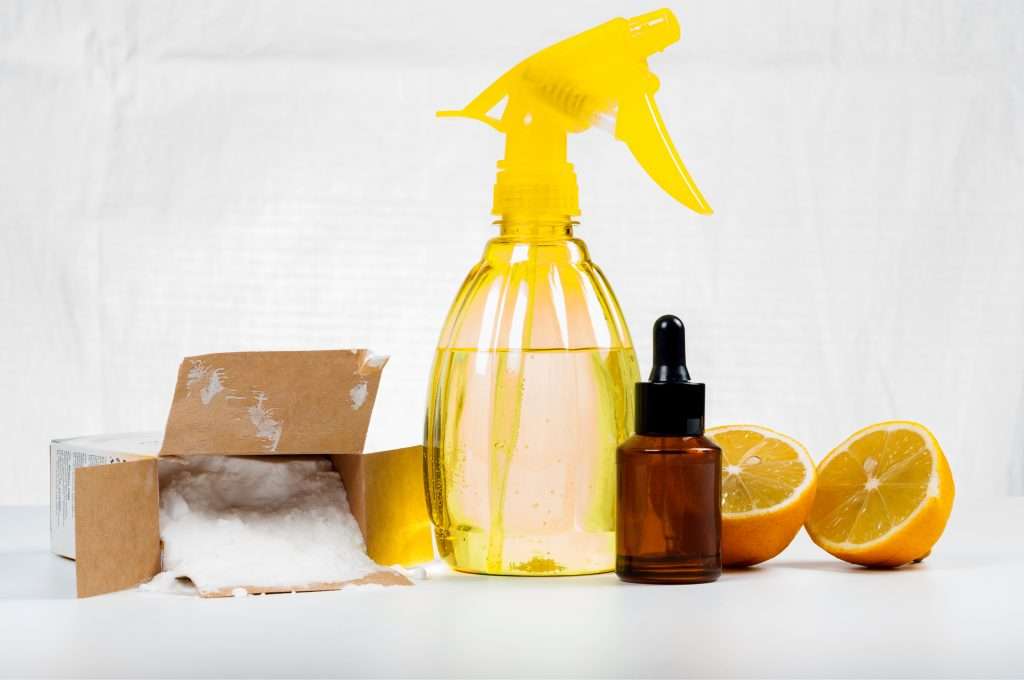
If
one of the reasons we clean our homes and offices is to provide a healthier
environment for
the people residing in buildings, then why are
people still cleaning with products that cause
major health problems?
Choosing the right cleaning product can be
difficult, with so many products claiming to be
“green,” “organic” or “natural” how do we
really know which ones are best to use when it come to our health?
This is made even harder by the fact that in the USA and Canada cleaning
product companies are not obliged by law to list the ingredient on the bottles
they sell. Because of this a lot of people are realizing that it is easier and
cheaper to make highly effective cleaning product at home.
Below is information about of the most popular ingredients of DIY cleaners followed by some cleaning product recipes that really work:
Baking Soda (Bicarbonate of Soda)
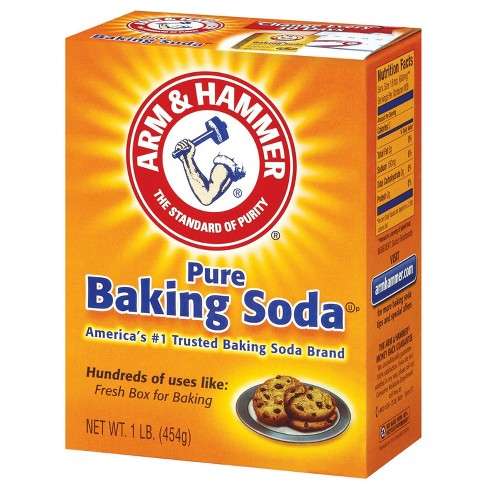
Baking soda is a naturally occurring mineral with the ability to balance the acidic and alkaline nature of all living things. Baking soda can neutralize mould, bacteria and mildew to name a few. This makes it a powerful deodorizer. It can also be used to scrub surfaces and remove stains, and it is non-toxic and cheap! It truly is one of the wonder substances for healthy cleaning.
When you do not want to use Baking Soda as a cleaner:
- Baking soda is an abrasive, so do not use on polished surfaces like finished marble or granite as it is can wear away the finish over time.
- If you are looking for a quick cleaning solution baking soda may not be the best choice. Once you have cleaned with baking soda you will need to clean up or rinse off the residue left behind. This is easy to do if you are cleaning a sink but for other areas it can be time consuming to rid the surface of the residue left behind.
- Do not use baking Soda on Aluminum. The alkaline baking soda oxidizes the aluminum causing discolouration
What not mix with Baking Soda for cleaning:
- Vinegar – while adding vinegar to baking soda makes a very satisfying bubbling solution, the combination has very little cleaning power. Baking soda is an alkali and vinegar an acid the two cancel out each other’s’ cleaning prowess leaving behind just water with a small amount of salt. Even for cleaning drains you would be better off with using warm water and a detergent rather than vinegar and baking soda.
White Distilled Vinegar

The other wonder substance of healthy cleaning! Vinegar is derived from grains, fruits or vegetables and is 100% non-toxic. Because of its acidic nature it can breaks down bacteria, mould and odour causing molecules, making it a very versatile effective cleaning agent. Vinegar as a household cleaner can be used as a stain remover, mildew eliminator, soap scum dissolver, chrome polisher, lime scale descaler, and room deodorizer.
When you don’t want to use vinegar as a cleaner:
- Although many people advocate for using a vinegar solution to clean hardwood floors, the acidic nature of vinegar may damage the floor finish over time leaving your floors looking very dull.
- For the same reason do not use vinegar on polished granite or marble surfaces
What not to mix vinegar with:
- Bleach. While we would never advocate using bleach anyway due to its toxic nature it is important to mention here that vinegar and bleach should never be mixed. The combination produces chlorine gas which is highly toxic.
- Hydrogen peroxide: hydrogen peroxide and vinegar by themselves are great safe cleaners and sanitizers, but when combined they create peracetic acid. While paracetic acid itself is a good sanitizer, but it is highly corrosive and can damage furniture surface and exposure can severely irritate the eyes, skin, and respiratory system.
- Castile
Soap: The acidic nature of vinegar unsaponifies the
castile soap. In other words it
breaks down the castile
soap releasing it natural oils. The result is a curdled solution with a white
film.
Essential oils
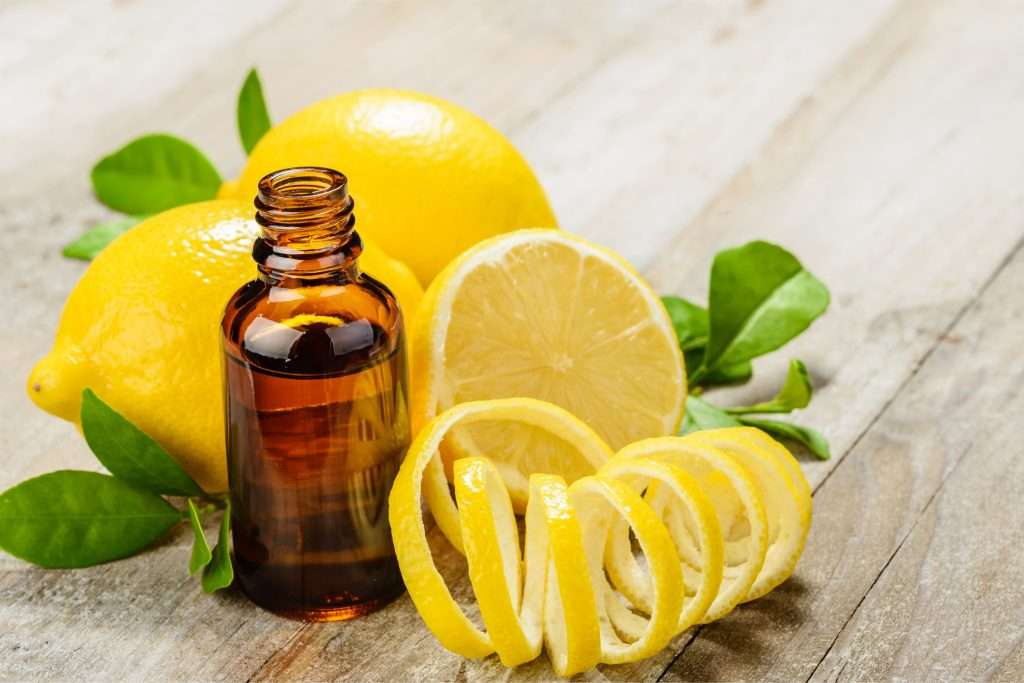
Essential oils are volatile aromatic oils that are obtained from various plants. They are used in
natural cleaning recipes for three reasons. Firstly, they have a pleasant natural odour: the smell is derived from whatever plant the oil was extracted from. Secondly, lots of essential oils contain antiviral, antibacterial, anti-fungal and antiseptic properties. Thirdly, some oils like
orange oil are excellent at removing tough stains and grime.
When you don’t want to use essential oils as a cleaner:
- Do not use essential oils neat as they can be highly potent and can cause adverse reactions to the skin etc in higher concentrations. Always dilute your essential oils in a solution of around 1-5% dilution.
- Do your research before using essential oils. Not all essential oils are suitable for cleaning. Popular oils used in natural cleaning are: orange, rosemary, fir, balsam, chamomile, lemon, cinnamon, eucalyptus, thyme, spruce and peppermint
What not to mix essential oils with:
- Water without an emulsifying agent. Essential oils are hydrophobic meaning that they cannot be mixed with water without the aid of an emulsifying agent. This means that you cannot just mix water and essential oils and use that as a cleaner. The essential oils will just sit on top of the water. Good emulsifying agents for essential oils are Castile soap, vinegar or alcohol.
- Sunlight. Try and keep your essential oils out of direct sunlight as sunlight can be detrimental to the effectiveness of the oil. Dark spry bottles work best for storage.
Borax
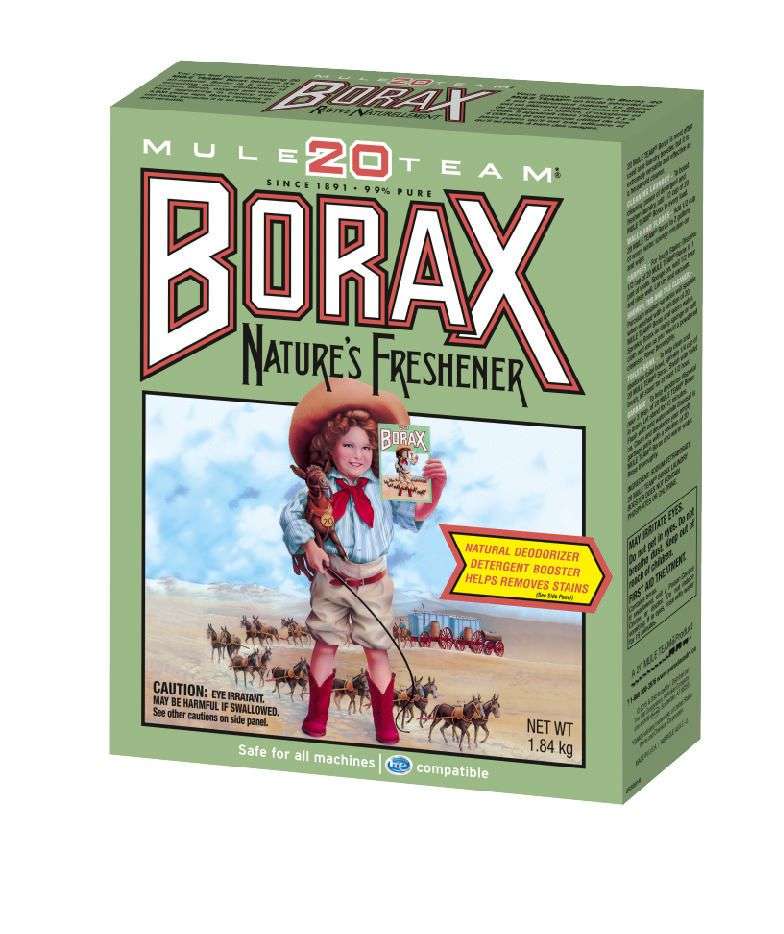
Borax is a natural mineral compound that creates a basic solution in water. It is a great natural bleach and cleaner. It can be used as a natural laundry booster, multipurpose cleaner, fungicide, preservative, insecticide, herbicide and disinfectant.
When you don’t want to use Borax as a cleaner:
- While borax is 100% natural and a lot safer the commercial chemical bleaches if used correctly, it should be handled with care as it can be toxic if ingested. For this reason it is not a good idea to use it on carpets or floors or any surfaces where children and pets might be exposed to any residue. The best uses are for toilet bowls, bathroom tiles etc. where the residue can be easily rinsed away. If you are looking a food safe cleaner that is really non-toxic this is not the ingredient to use. For more information you can request the material safety data sheet from the borax website:
http://www.borax.com/product/borax-decahydrate.asp
What not to mix Borax with:
- Vinegar or lemon juice. Borax is an alkaline substance, so by mixing with an acid such as vinegar or lemon juice the borax will be neutralized making it cleaning properties ineffective
Hydrogen Peroxide
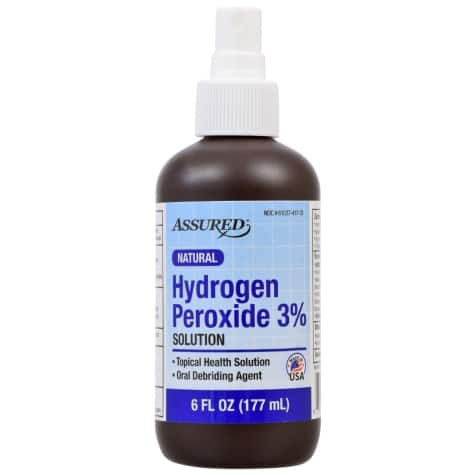
Hydrogen peroxide (H2O2) is water with an extra oxygen molecule. It breaks down into oxygen and water making it a great food safe non-toxic cleaner. Hydrogen Peroxide is considered an effective disinfectant and bleach alternative. The USA’s Environmental Protection Agency stated that hydrogen peroxide was safe for the environment “because 1) the substance readily decomposes to water and oxygen gas, leaving no residue; 2) it is effective at low concentrations where no toxic effects are expected.”
When you don’t want to use Hydrogen Peroxide as a cleaner:
- Hydrogen Peroxide can bleach fabric so do not use on coloured fabrics
- It can corrode wood and natural stone finishes over time if used in the wrong concentrations.
What to not mix Hydrogen Peroxide with:
- Vinegar. As mentioned earlier in this article, do not mix with vinegar as it will produce corrosive paracetic acid.
- Sunlight – exposing hydrogen peroxide to sunlight will break it down into oxygen and water. While this is great after it has done it job of disinfecting, you don’t want this to happen before you have used it. Make sure you store your hydrogen peroxide away from direct sunlight, ideally in dark bottles.
Lemon Juice or Citric Acid
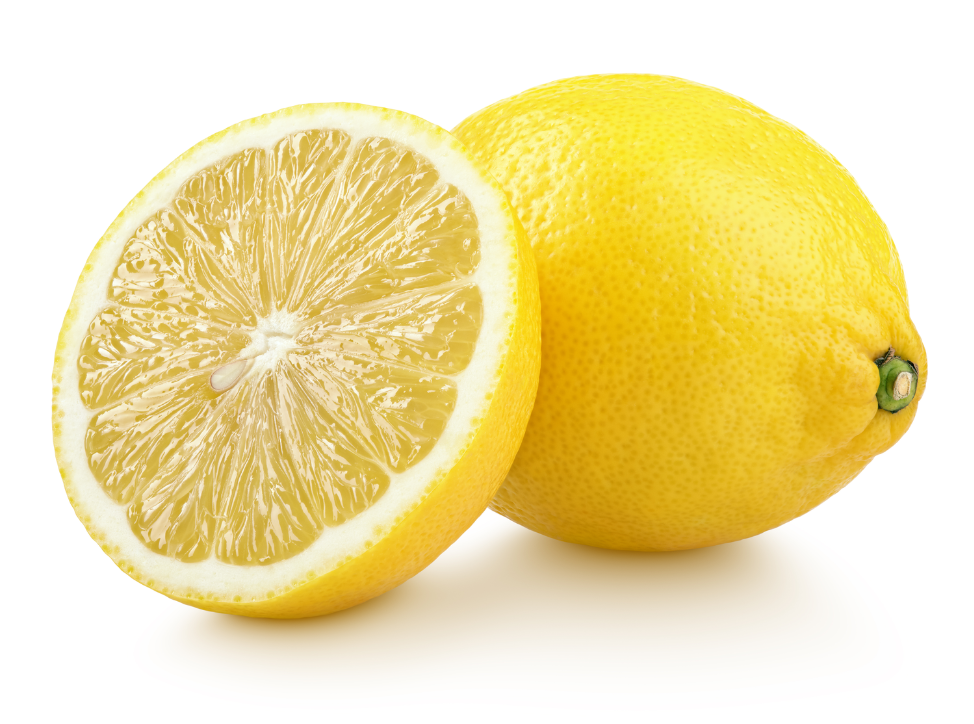
Not only does lemon juice have a pleasant fresh smell it contains citric acid which kills bacteria, mold, and mildew.
When you don’t want to use lemon juice as a cleaner:
- Because lemon juice is an acid it can wear the finish on wood and natural wood over time if in high enough concentration.
What not to not mix lemon juice with:
- Baking soda. The alkaline nature of baking soda with neutralize the acidic nature of the lemon juice. The will make the cleaning properties of the lemon useless.
Castile Soap

Castile Soap is natural soap is made from vegetable fats/oils such as hemp, palm or olive. it is a surfactants that attract dirt and oils and suspend them in water so they can be washed away.
When not to use Castile Soap :
- If you are using castile soap as a shampoo do not use if you have colour in your hair. The soap can strip the colour over time
What not to mix Castile Soap with:
- Hard water. Hard water will react with castile soap and leave behind a white film residue. If you live in a hard water area use decyl glucoside instead which is an extremely mild and gentle non-ionic surfactant naturally derived from sugar. While Decyl glucoside might be harder to source (although it can be bought on Amazon) it performs much better than castile soap in hard water conditions.
- Vinegar. As mentioned earlier vinegar will break down castile soap leaving behind white film.
- Lemon Juice . Since lemon juice is an acid just like vinegar it has the same affects as vinegar in castile soap.
Here is a list of the top 10 DIY Household Cleaners
1. All Purpose Cleaner
Ingredients:
1 cup water
2 teaspoons castile soap (or decyl glucoside)
10-15 drops thieves essential oil (a bend of cinnamon, clove, rosemary and eucalyptus)
Instructions:
Mix the water and soap in a dark coloured spray bottle
Add the thieves oil and shake
Store in a cool, dark place.
2. Glass Cleaner
Ingredients
Mix equal amounts of water and distilled vinegar
Instructions:
Mix the ingredients in a spray bottle and shake
Spray on glass and polish off with a microfiber glass cloth
3. Bath and Shower Scrub
Ingredients:
2 table spoons of liquid castile soap or decyl glucoside
1 cup of baking soda.
Instructions:
Combine the liquid soap and baking soda to make a paste
Scour tubs, shower surfaces with a damp cloth or sponge then rinse.
4. Oven Cleaner
Ingredients:
2 tablespoons castile liquid soap or decly glocoside
1 cup baking soda
½ a cup of course salt
30 drops orange essential oil
White distilled vinegar (for rinsing, do not use in the paste)
Instructions
Make a paste out of the soap, baking soda, and salt, adding a little water, if needed.
Apply to the interior of the oven and let sit for several hours, preferably overnight.
Dip a sponge or scrubbing brush into the warm water and wash the interior clean.
Spray interior with some distilled white vinegar to rinse away any excess paste residue.
5. Mildew and Black Mould Spray
Ingredients:
2 cups of white distilled vinegar
Two teaspoon of tea tree oil
Instructions:
Mix the vinegar and tea tree oil in a dark coloured spray bottle
Spray over the affected areas and leave to sit for 20 minutes
Using warm water and a toothbrush scrub the mould and wipe away with a cloth
Once all the mould has been removed spray again with the vinegar and tea tree oil to help prevent regrowth of the mould. In areas susceptible to black mould and mildew like bathrooms spray this solution over the surfaces on a weekly basis to help keep the mould at bay.
6. Toilet Bowl Cleaner
Ingredients:
½ cup of baking soda
½ cup of 3% hydrogen peroxide
10 drop of lemon essential oil (optional)
Instructions
In a squeezable bottle (think empty condiment bottle) mix the baking soda, hydrogen peroxide and essential oil. Shake
Squeeze the content under the rim of the toilet bowl and let sit for 5 minutes. Get a toilet scrubbing brush and scrub the inside of the bowl
Note: for the outside of the toilet bowl and the seat just use the hydrogen peroxide to clean. The baking soda will leave a residue which then has to been cleaned off. Remember to let the hydrogen peroxide sit for a while before wiping. This gives it time to disinfect the surfaces.
7. Wood Polish
Ingredients:
2 table spoons of almond oil (almond oil is a very light oil that treats your wood furniture gently and results in a great shine)
5 drops of rosemary essential oil
Instructions:
Mix the ingredients in a small spray bottle
Spray on wood furniture and wipe along the grain of the wood with a soft lint free cloth
8. Floor Cleaner
Ingredients:
½ cup of 3% hydrogen peroxide
1/8 cup of castile soap or Decyl Glucoside if you live in a hard water area
2 gallons of warm water
Instructions:
In a mop bucket mix all the ingredients. For best results use with a microfiber flat mop
9. Orange Enzyme Cleaner
This cleaner contains enzymes that help speed up the breakdown or organic material as well as d-limonene (orange oil) which is a powerful degreaser
Ingredients:
½ cup of sugar
1 teaspoon of yeast
2 cups of orange peel (fresh and clean)
4 cups of warm water
Instructions:
- Cut of the orange peel and push into the top of a 2 liter plastic bottle (a soda bottle is perfect as it is designed to hold pressurized liquids)
- Add the rest of the ingredients and shake until all the sugar is dissolved
- Release the pressure by loosening the cap before tightening it. Do this about once a day for about 3 week.
- Keep in a warm place for at least 3 weeks turning the bottle daily to remix the solids
- After at least 3 weeks strain the solids off and place the liquid in an airtight container
- For general cleaning you can dilute the cleaning with either water or vinegar. For tougher jobs such as oven or other really stubborn or greasy area use undiluted.
- For a stronger cleaner leave to ferment for longer
10. Lime Scale Remover
Ingredients:
Pickling vinegar (pickling vinegar is a stronger acid that ordinary white distilled vinegar)
Instructions:
Let the vinegar sit on the lime scale for 30 minutes to 12 hours (depending on how bad the lime scale is)
Keep applying with a spray bottle if the lime scale in on a vertical surface. For lime scale around faucets, soak a cloth in vinegar and place around the faucet holding it in place with an elastic bend. Keep re-soaking the cloth if you are leaving it for an extended period of time.
To find out more out non-toxic office cleaning in Victoria BC Contact us Today.
